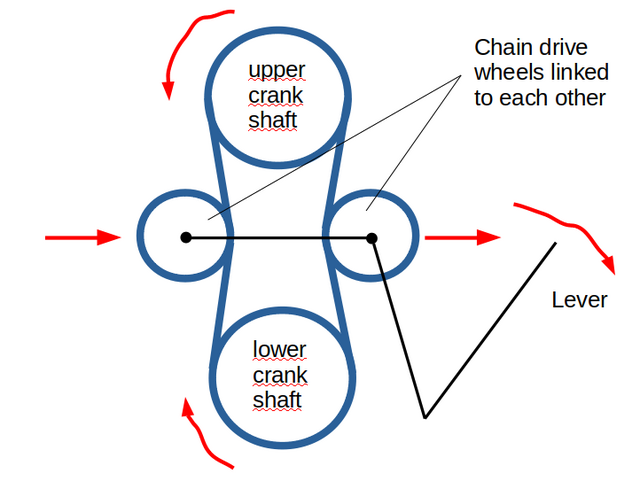But I wouldn't say uniflow engines in general are inflexible and unresponsive. The uniflow principle as it was taken into the hand during the 20th century always seemed to me as a sort of pinnacle of reciprocating steam engines and I suspect they would have even stepped into the place of the IC engines, if the IC engines hadn't been a success story.
Uniflow steam engines have the advantage over corliss engines and all the other designs, that I have in my mind right now, that they address some issues of the steam engine, which hadn't been addressed like this before: The compression - usually seen as something negative in engines - gets turned into a thermodynamic advantage. The expansion cools down the cylinder walls, but the compression increases it again BEFORE new steam is let in. This is a steam engine's designer dream come true. If there can be fiddled with steam engine efficiency in any way, the best is to fiddle with the thermal efficiency.
Yes, mice are hungry. But my engine is going to be somewhat of a well-fed rat. Not an efficiency-tuning masterpiece, yet big enough to see and learn how the thermodynamics work in an opposed piston design.
I am not so much scared about how to design the cams, but of what the designing means for the engine. My engine would have an inlet opening of over 70° of one crank rotation, translating to a 90% expansion ratio (for simplicity reasons, ignoring the exhaust port part of the stroke) The cam size is defined by the valve lift and this angle. Thus, the cam would need to be almost as big as the piston diameter is to work properly. This is what I was worrying about the most. Maybe with some rocker arms on the cam, I could reduce the cam radius difference to 1mm. Then, it would look better sized. Actually, rocker arms could be the way to go. Why not.
Now, letting it all sink in, I had the spontaneous idea to build both valves and make them interchangeable. That way, I can try out both systems - poppet valves and the rotational valve. Since the intake valve assembly would be a register attached to the side of the engine, it would be very easy to accomplish without any hassle. And my plan right now is to build a one-cylinder tryout engine to find the best working conditions and then realize them in a multi-cylinder version. This way, I can keep the costs for design flaws and remodeling to a minimum. And I can not stress this out enough. This will be a very cheap engine. The only costly parts will be the gear and the cylinder. In worst case, the cylinder will cost ~100 €/$. So, I calculate an overall price of 250€ for the engine.
Barts, you build a 5,75"x5,75" uniflow engine? I will definitely look over the Sea Lion thread.
Thanks barts for all the interesting links


